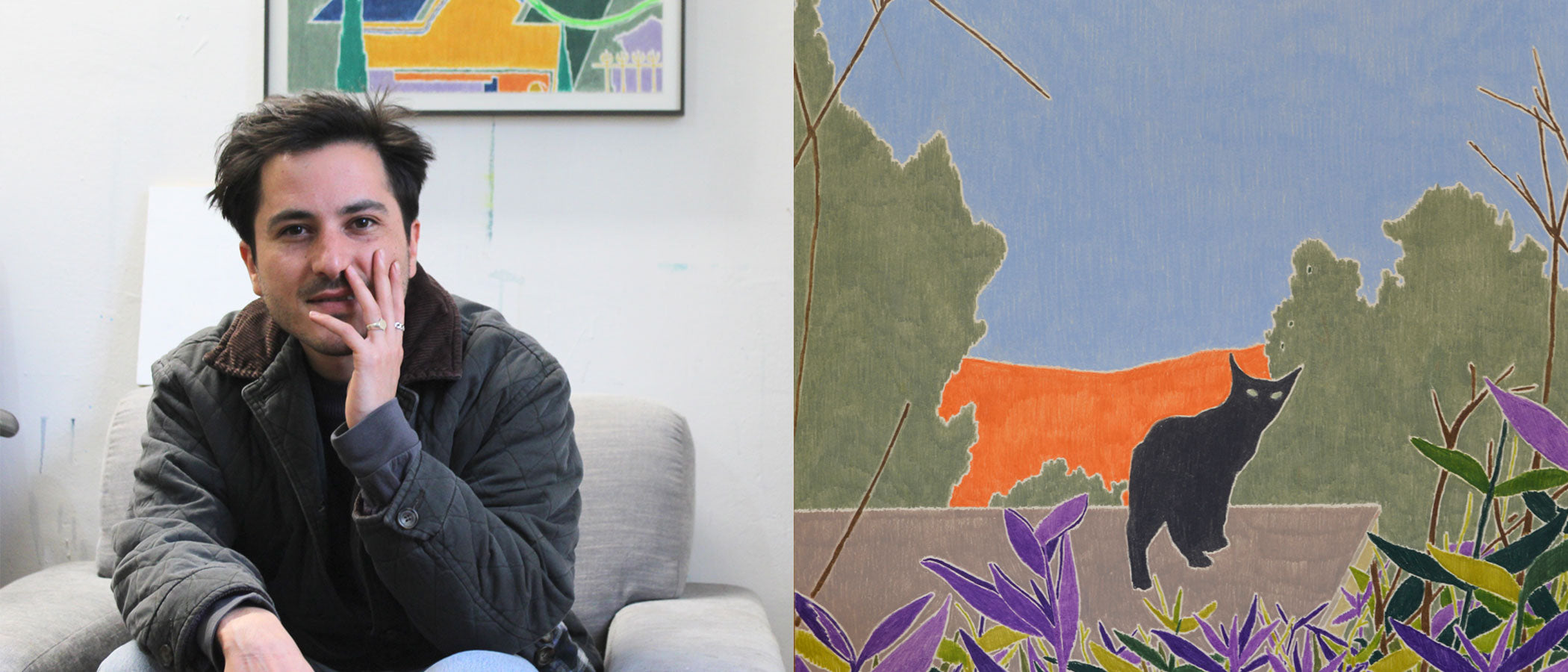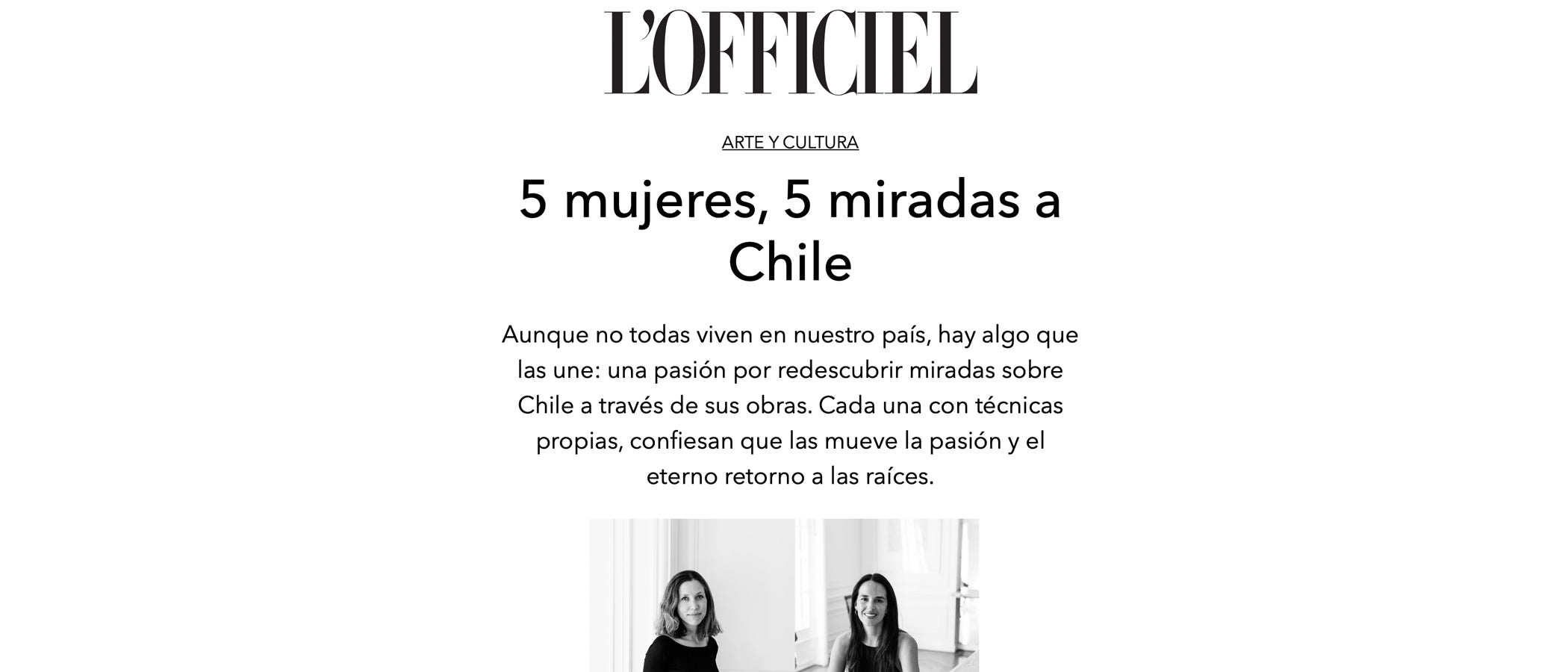
In conversation with José Cori
José Cori (Friburgo, 1989) is a visual artist whose use of saturated and vibrant colors is part of his artistic sensibility, which alludes to figurative narratives that sometimes intersect with abstraction. José Cori's work functions as a gateway to his imaginaries, to different references to the History of Art, and an insistent crossing between the everyday, the symbolic and the iconic.
The main materials of his artistic work are coloured pencils, followed by an exploration of different plastic forms, such as ceramics, paint and oil pastels. Whatever his tools, the artist's works are presented to us as a completely colourful and vibrant aesthetic experience. Influences can be seen in them that run through Matisse, Hockney and Vuillard, as well as the early Renaissance, medieval painting and poetry.
Through suggestive silhouettes, José Cori creates scenes where the continuity of colors gives fluidity to our imagination. The stories suggested by his works transport us to a space where the satisfaction of the senses is mixed with a form of daydreaming about what we see. He immerses us in the “second nature” of art to make us reflect on what things are not, but could be.
By engaging in this profound journey through his drawings, we can sense that José Cori's artistic sensitivity lies beyond the literal evocation of things. We are captured by his images, which suggest a purer and more naive way of looking. This is how, in the artist's words, "the image becomes an access to the world" where the creative value of the poetic is revealed to us.
Tell us a little about yourself and why you decided to become an artist.
Like many artists, I had a penchant for the humanities and a deep rejection of mathematics since I was a child. Since I was in school, I also began to be interested in poetry, which was perhaps the first artistic discovery that had a powerful influence on me. When the time came to decide what to study, I discovered that I was interested in doing something more creative than investigative, such as literature, philosophy or psychology. I felt that the path of art would give me the freedom to learn and do what I wanted, and not something imposed “from outside.”
Describe your artistic style in three words or concepts.
Back to basics
What are the imaginaries you allude to in your works?
My impetus is to create images that present a way of being and seeing. Making art in this sense is an existential question, a staging of subjectivity. In general, in the scenes I construct, a sense of gratuitousness predominates, that sphere of reality in which the imagination is at ease. The absurd, the religious, humor, leisure, etc., all collide here, serving as bridges for a symbolic potential. The final image is ideally a harmony that is built from all these tensions.
Tell us about the Rainbows series. What inspiration or observations gave rise to these pieces?
I really like those pieces because, on the one hand, they are larger in size and, on the other, I think I managed to reach a midpoint between figuration and abstraction. In that series I wanted to reach that border, to eliminate the more anecdotal and figurative actions to access something more formal and abstract, but which, at the same time, maintained the minimum of something that could be an element: a rainbow, a portal or a landscape.
Figuration and abstraction are aspects that can be seen in the aesthetics of your work. Tell us about that perspective or worldview.
I think that contemporary painting is characterized by its efforts in this dialectic, in a more obvious configuration between the abstract and the figurative. From the 20th century onwards, abstraction gives painting a new “consciousness of itself”, a “consciousness of its own practice”, that is, like almost every form of language since Modernity, it contains within itself its own critique. In my particular case, I use abstraction as an evocative medium, as a means towards that suggestive ambiguity. In the “Rainbows” series, or “Rainbows”, as I call them, I wanted to get closer to that. Pure abstraction is not a possibility for me, because I need the delimitation that figuration proposes to me: a “lined field” along which the image is guided.
The references to art history in your paintings are as if you were telling us about it through a unique sensitivity. How do you arrive at these references?
Despite drawing, all my references come from the history of painting. I spend half my time looking at paintings, both from history and from my contemporaries. That's where the pictorial references come from, from places that have interested me.
How do you define your color palette when starting a work?
In general, it is very intuitive. I don't program a palette a priori, but rather I discover it as I go along. Even so, we can talk about a palette in each work, since there is a specific composition of chromatic correlation. Sometimes, I start with a part where I know I'm going to use a specific color, and from there I configure the other colors that will go around it, considering temperatures or whether I want the image to be daytime or nighttime, for example. Regarding materials, I mainly use colored pencils. I like their precision and the saturation of the pigment they achieve.
Are there other plastic forms that you would like to explore?
I am exploring ceramics, pastels and oil sticks. The application of traditional painting media and what that way of painting entails excites me.
Which contemporary or art historical artists influence your work?
Bob Thompson, Tal R, Andrew Cranston, Karin Mamma Anderson, Raoul de Keyser, Lois Dodd, Danny Fox, Peter Doig, Florian Krewer, Picasso, Henri Matisse, Édouard Vuillard, Pierre Bonnard. Furthermore, I am very interested in early Renaissance painting and medieval painting.
What observation do you seek to convey to those who follow your work?
The question is complex, because its answer implies a theory of art. Or, any answer to the question is in some way tautological, because what is sought to be delivered is precisely an observation: something that is common to all of us, seen from a particular perspective. But I can say, in that sense, that I align myself with Jean-Luc Nancy's idea when he points out that "Poetic technique strives to […] put into the world what is outside the world."
How does poetry influence your work?
Poetry has influenced me greatly, but it is more accurate to say that it has influenced me as a person, rather than my work. What interests me about poetry, its quality, the effectiveness of its images, is what I seek to do in another way, through visual images. It is about participating in that same creative spirit.
What do you think about the current Chilean art scene?
I think the scene in Chile is quite solid. There are artists of all kinds working at a high level. What is lacking, in my opinion, is a breadth of critical, infrastructural and financial means to sustain and consolidate that scene.
by Viviana Roman Lema
See works by José Cori


